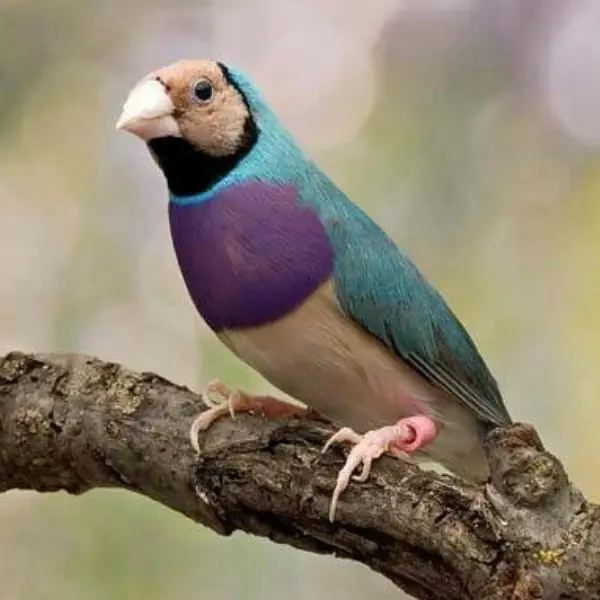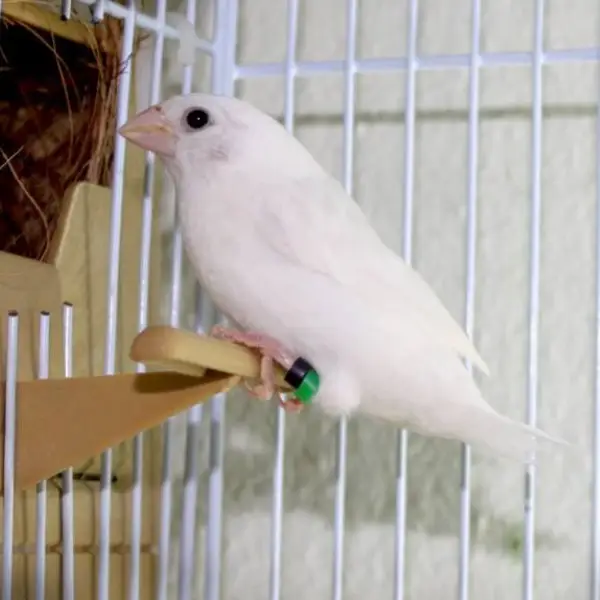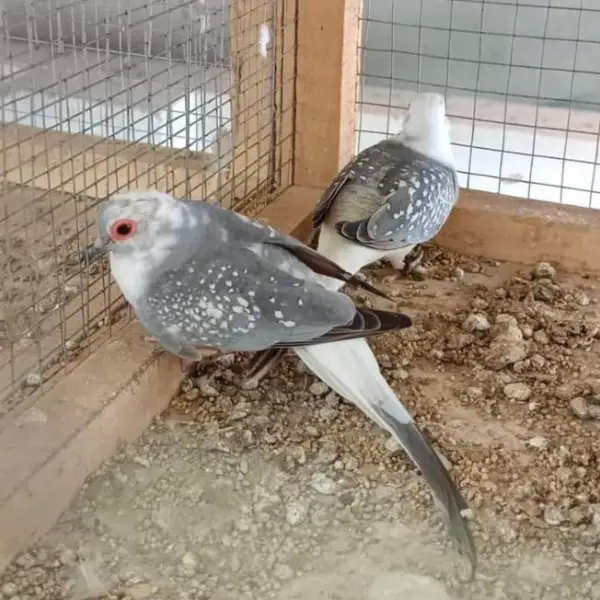Free shipping order over 20,000
Gray Cockatiel
₨ 5,000 Original price was: ₨ 5,000.₨ 4,000Current price is: ₨ 4,000.
-
- Scientific Name: Nymphicus hollandicus
- Size: Approximately 30-33 cm (12-13 inches) in length, including the tail.
- Weight: Around 80-120 grams (2.8-4.2 ounces).
- Color:
- Body: The Gray Cockatiel has a predominantly gray body. The shade of gray can vary from light to dark gray.
- Face: The face usually features a soft yellow or pale orange cheek patch. The facial crest is also gray and blends with the body color.
- Wings: The wings are gray with some subtle darker or lighter gray shading, depending on the individual.
- Tail: The tail feathers are gray, often with slightly lighter or darker streaks.
- Beak: Small and pale, usually light pink or ivory.
- Eyes: Dark eyes, which contrast with the gray feathers.
SKU: REF. LA-5766-10-1-1-1-1-1-1-1-1-1-1-1-1-1-1-1-1-1-1-1-1-1-1-1-1
Categories: PARROTS, Uncategorized
Tag: parrots
Share
Share on facebook
Share on email
Important Keys:
Habitat
- Distribution: Native to Australia, where cockatiels live in a range of environments, from open woodlands to bushlands. The Gray Cockatiel mutation is a result of selective breeding and is typically found in captivity.
- Environment: In captivity, Gray Cockatiels thrive in spacious cages or aviaries with ample toys, perches, and social interaction. Providing a stimulating environment with space for flight and enrichment is important for their well-being.
- Social Structure: Gray Cockatiels are social birds that enjoy interacting with other cockatiels or their human caregivers. They are known for their affectionate and friendly nature.
Diet
- Primary Food: In the wild, cockatiels feed on seeds, fruits, and other plant materials, with occasional consumption of small insects.
- Captivity Diet: In captivity, they should be fed a balanced diet that includes high-quality seeds, pellets, and a variety of fresh fruits and vegetables. They also enjoy leafy greens and millet sprays.
- Feeding Behavior: Gray Cockatiels are active feeders and benefit from foraging opportunities. Offering a variety of foods and providing enrichment helps keep them engaged and healthy.
Breeding
- Breeding Season: Cockatiels can breed throughout the year in captivity. In the wild, breeding typically aligns with the Australian spring and summer.
- Nest Location: In the wild, cockatiels nest in tree hollows. In captivity, they use nest boxes.
- Egg Quantity: Clutches usually consist of 4-7 eggs.
- Incubation Period: The female incubates the eggs for about 18-21 days.
- Fledging: Chicks fledge approximately 4-6 weeks after hatching, though they continue to be cared for by the parents for a few more weeks.
Lifespan
- In the Wild: Cockatiels generally live around 10-15 years.
- In Captivity: With proper care, they can live up to 15-20 years or more.
Behavior
- Temperament: Gray Cockatiels are known for their friendly, affectionate, and playful nature. They are relatively quiet compared to other parrots but can still be quite vocal with chirps and whistles.
- Social Interaction: They thrive on social interaction, whether with other cockatiels or human caregivers. They can be taught to mimic sounds and simple words and enjoy being handled and cuddled.
- Vocalization: Their vocalizations include soft whistles, chirps, and occasional calls. Males are especially adept at mimicking sounds and can be trained to speak or whistle tunes.
![]()
Be the first to review “Gray Cockatiel” Cancel reply
Related Products
-
-14%
Green Star Finch
₨ 17,500Original price was: ₨ 17,500.₨ 15,000Current price is: ₨ 15,000. -
-30%
Gray Shaft Tail
₨ 20,000Original price was: ₨ 20,000.₨ 14,000Current price is: ₨ 14,000. -
-20%
Lotino Gouldian Finch
₨ 15,000Original price was: ₨ 15,000.₨ 12,000Current price is: ₨ 12,000. -
-43%
Blue Gouldian Finch
₨ 35,000Original price was: ₨ 35,000.₨ 20,000Current price is: ₨ 20,000. -
-19%
White Bengalese
₨ 1,850Original price was: ₨ 1,850.₨ 1,500Current price is: ₨ 1,500. -
-21%
Euro Bengalese
₨ 3,800Original price was: ₨ 3,800.₨ 3,000Current price is: ₨ 3,000. -
-42%
Silver Pied Dove
₨ 12,000Original price was: ₨ 12,000.₨ 7,000Current price is: ₨ 7,000.
Sign Up for Exclusive Birds Care Tips and Offers from Phool Panchi
Company links
Category
Contact
© 2024 Phool Panchi | Developed By v3Studio
















Reviews
There are no reviews yet.